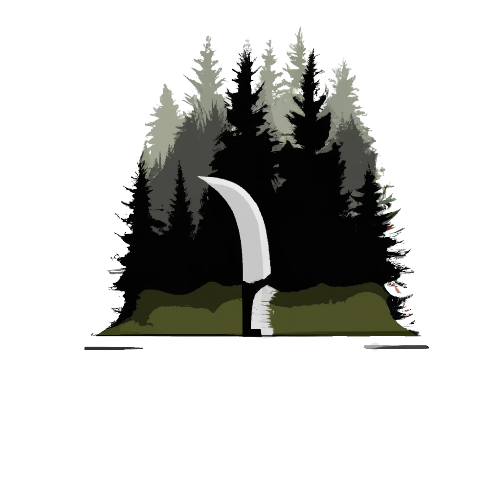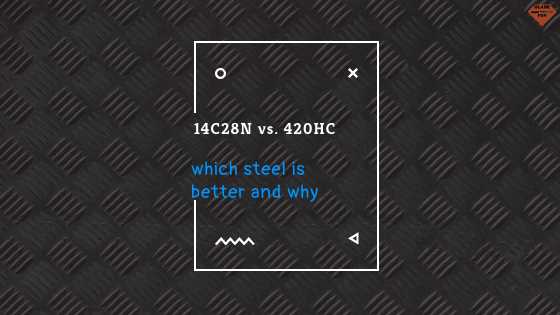420HC and 14C28N are two very common mid-tier steels used by many bigger knife companies like Kershaw and Buck. With these steels being competitors, it would only make sense to compare the two and see which one is better.
Here’s the short answer
Overall 14C28N and 420HC are going to perform almost identically. 420HC will be slightly easier to sharpen and will not hold its edge quite as well, but otherwise they are basically the same steel. Just make sure to get them from a reputable company. Otherwise, the steel quality will be poorer.
With the short answer out of the way, we can look at each steel individually, when you would want one over the other, and the best knives in each steel.
420HC
420HC is a mid-tier steel that has very good corrosion resistance. However, it doesn’t have very good edge retention and is therefore easy to sharpen. As long as 420HC is made in the USA or Europe, it will be a decent mid-tier steel.
The biggest downside to 420HC is its edge retention (or lack thereof). 420HC does not have good edge retention and will lose its edge quite easily. So if you don’t want to have to sharpen your knife at the end of every week, then this is not the steel for you.
Here is what 420HC is made of:
- 0.46% carbon
- 13% chromium
- 0.3% vanadium
- 0.4% manganese
- 0.4% silicon
The carbon increases strength and edge retention (but too much carbon will make the knife blade brittle), chromium will increase corrosion resistance, vanadium will increase wear resistance, manganese–much like carbon–will increase strength, and silicon will have the same effect as manganese but to a lesser extent.
14C28N
14C28N is a mid-tier steel that performs well in almost all fields. It has great toughness, good corrosion resistance, decent edge retention, and decent wear resistance.
14C28N is not great in any one area but not bad in any area either. If you want a steel that will work for all common knife uses, like opening boxes and occasionally cutting through a tough surface, then this steel will work great. But if you need a more special-purpose steel, you might look elsewhere.
Here is what good 14C28N is made of:
- 0.62% carbon
- 14% chromium
- 0.2% silicon
- 0.6% manganese
- 0.11% nitrogen
Nitrogen will increase a steel’s edge retention and strength.
When would you want one steel over the other?
Now that we have taken a closer look at each steel and what they are good for we can see when you would want one over the other and in what situations one is better.
If you are in an environment where you need a steel that will not rust easily, such as a very humid environment or times where you may be in or walking through a lot of water, then, in my experience, you will want 420HC. 420HC is a very corrosion-resistant steel and I have never had any of my 420HC knives rust.
If you need a steel that will keep its edge super well, you will want 14C28N. While neither steel has exceptional edge retentive ability 14C28N does have more carbon making it better at holding an edge. Keep in mind that the better a knife keeps its edge, the harder it will be to resharpen.
420HC and 14C28N are pretty similar so the differences listed above will be quite small, but still noticeable. So while there are some small differences, it will not make much of a difference what steel you choose.
The best knives in each steel
Since we have taken a close look at each steel, which steel is better in each situation, and when you would want one steel over the other, we can see which knives are best in each steel.
Kershaw Leek–14C28N
The Kershaw Leek is a mid-tier EDC (EveryDay Carry) knife that works great for everything EDC-related. It is a sharp, reliable knife that is just the right weight and size to carry comfortably. It has a 3-inch stainless steel handle, a 3-inch blade that can have parcel serrations, and has assisted opening.
Check out this knife here (link to Amazon)
Buck Knives Bantam 285–420HC
The Buck Bantam, while not fancy, works great for an EDC knife that is entry-level. It’s inexpensive, has a stainless steel pocket clip, a GRN handle, and has a thumb stud. It is a simple knife that works great if you need a pretty cheap knife that still works great.
Check out this knife here (link to Amazon)
Conclusion
Both steels will have pretty similar performance and will both work for most knife tasks. There are some situations where the composition of the steel lends it better in some situations but for the most part, you will not notice a huge difference in the two steels if you were to test each one.

